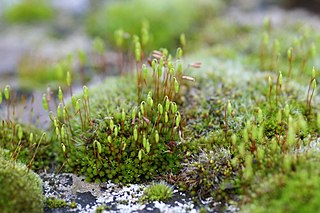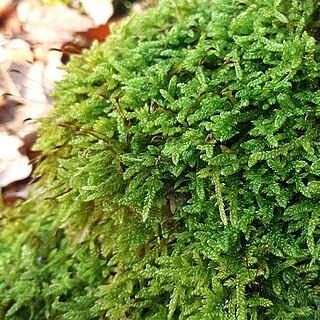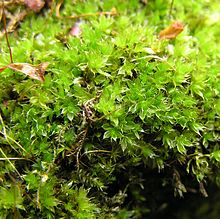Ptychostomum warneum, known as sea bryum or Warne's threadmoss, is a protected moss found in sandy coastal areas in temperate regions of Europe and is also recorded to have been found in the Himalaya, the Altai Mountains and in Quebec, Canada.

Bryaceae is a family of mosses.

The Giardino Alpino Paradisia or Jardin alpin Paradisia (French), is an alpine nature preserve and botanical garden located at 1700 meters altitude in the Gran Paradiso National Park at Valnontey, Cogne, Aosta Valley, Italy. It is open daily in the warmer months.

Funaria hygrometrica, the bonfire moss or common cord-moss, is a type of water moss which grows on shady, moist soil. It can also be found on moist walls and the crevices of rocks and places where recent fires have taken place. It has been reported to grow in Niagara Cave, an artificially illuminated cave devoid of natural light. Under such conditions, its growth form changes so that the internodes lengthen and the leaves become longer and narrower.

Bryum is a genus of mosses in the family Bryaceae. It was considered the largest genus of mosses, in terms of the number of species, until it was split into three separate genera in a 2005 publication. As of 2013, the classification of both Bryum and the family Bryaceae to which it belongs underwent significant changes based on DNA studies.

Bryum elegans is a species of mosses in the family Bryaceae. It is found in Norway, Poland, and the Russian Federation.

Thuidium delicatulum, also known as the delicate fern moss or common fern moss, is a widespread species of moss in the family Thuidiaceae. It is found in North and South America from Alaska to Brazil.

Plagiomnium cuspidatum, also known as toothed or “baby-tooth” plagiomnium moss and woodsy thyme-moss, is a species of thyme-moss that originated in North America, but can now also be found throughout Middle America, Africa, Northern and Southern Asia, and Europe.

Barbula unguiculata is a species of moss belonging to the family Pottiaceae.
Bryum blindii, commonly known as Blind's bryum moss, is a species of moss belonging to the family Bryaceae.

Acaulon muticum is a species of moss belonging to the family Pottiaceae.

Ptychostomum pseudotriquetrum, commonly known as marsh bryum, is a species of moss belonging to the family Bryaceae.

Gemmabryum caespiticium, handbell moss, is a species of moss belonging to the family Bryaceae.
Bryum urbanskyi is a species of moss belonging to the family Bryaceae.
Leptobryum pyriforme is a species of moss belonging to the family Bryaceae.
Ptychostomum cyclophyllum, round-leaved bryum, is a species of moss belonging to the family Bryaceae.

Ptychostomum schleicheri, the Schleicher's bryum moss, is a species of moss belonging to the family Bryaceae.

Hypnum is a genus of mosses belonging to the family Hypnaceae.

Ptychostomum is a genus of mosses belonging to the family Bryaceae. It has an almost cosmopolitan distribution.














